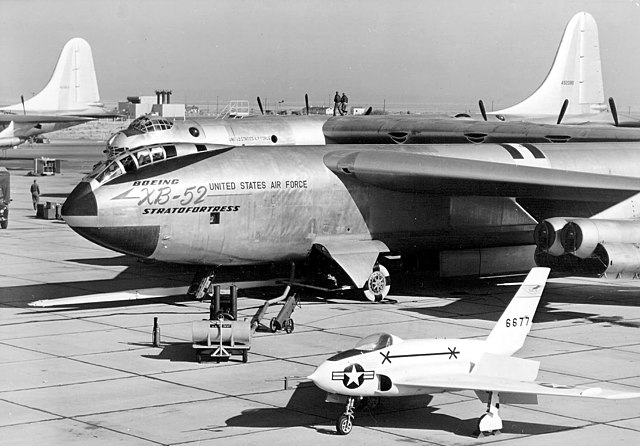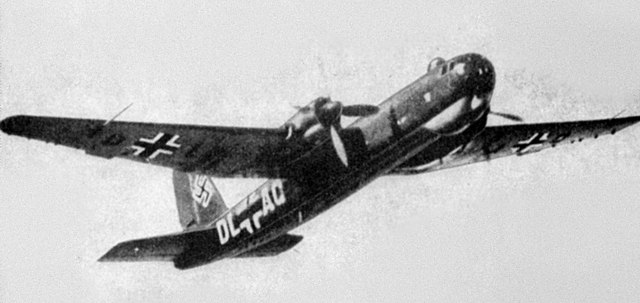Boeing B-52 Stratofortress
The Boeing B-52 Stratofortress is an American long-range, subsonic, jet-powered strategic bomber. The B-52 was designed and built by Boeing, which has continued to provide support and upgrades. It has been operated by the United States Air Force (USAF) since the 1950s, and NASA for over 40 years. The bomber can carry up to 70,000 pounds (32,000 kg) of weapons and has a typical combat range of around 8,800 miles (14,200 km) without aerial refueling.
Boeing B-52 Stratofortress
XB-52 prototype on flight line (X-4 in foreground; B-36 behind). Note original tandem-seat "bubble" style canopy, similar to Boeing's earlier B-47 Stratojet.
Side view of YB-52 bomber, still fitted with a tandem cockpit, in common with other jet bombers in US service, such as the B-45 Tornado, B-47 Stratojet and Martin B-57 Canberra
B-52H Stratofortress undergoing maintenance to its rudder with its fin folded
A strategic bomber is a medium- to long-range penetration bomber aircraft designed to drop large amounts of air-to-ground weaponry onto a distant target for the purposes of debilitating the enemy's capacity to wage war. Unlike tactical bombers, penetrators, fighter-bombers, and attack aircraft, which are used in air interdiction operations to attack enemy combatants and military equipment, strategic bombers are designed to fly into enemy territory to destroy strategic targets. In addition to strategic bombing, strategic bombers can be used for tactical missions. There are currently only three countries that operate strategic bombers: the United States, Russia and China.
A contemporary U.S. Air Force strategic bomber, the Rockwell B-1 Lancer
The Sikorsky Ilya Muromets was designed by Igor Sikorsky as the first ever airliner, but it was turned into a bomber by the Imperial Russian Air Force.
The only operational strategic bomber with the Luftwaffe in World War II was the troubled Heinkel He 177.
A USAF B-2 Spirit stealth bomber.








